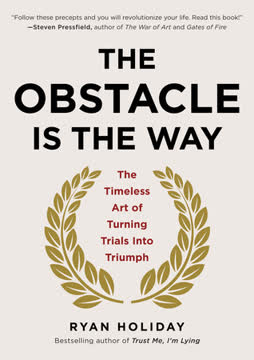Key Takeaways
1. Close Your Open Door Policy for Greater Productivity
"An open door is an open invitation for interruptions."
Focused work requires boundaries. While an open door policy may seem welcoming, it often leads to constant interruptions that hinder productivity and deep work. Instead, leaders should create structured availability:
- Set specific office hours for team members to drop in
- Use a closed-door signal system to indicate focus time
- Encourage the use of asynchronous communication tools
By establishing clear boundaries, leaders can balance accessibility with the need for uninterrupted work time, ultimately boosting both their own productivity and that of their team.
2. Reveal Everything: Transparency Breeds Trust and Innovation
"Transparency isn't just about sharing information; it's about creating a culture of openness and trust."
Radical transparency fuels growth. When leaders share information freely, they create an environment of trust and collaboration. This approach:
- Empowers employees with knowledge to make better decisions
- Encourages innovative thinking by providing context
- Reduces gossip and speculation
Implement transparency by:
- Sharing company financials and metrics
- Discussing challenges and failures openly
- Involving team members in decision-making processes
By embracing transparency, leaders foster a culture of ownership and collective problem-solving, driving the organization forward.
3. Ditch Your To-Do List: Focus on One Thing at a Time
"Multitasking is the enemy of productivity and excellence."
Singletasking amplifies impact. Traditional to-do lists often lead to task-switching and superficial work. Instead, leaders should prioritize deep focus on one important task at a time. This approach:
- Increases the quality of work produced
- Reduces stress and mental fatigue
- Leads to faster completion of significant projects
Implement singletasking by:
- Identifying the most important task for each day
- Blocking out dedicated time for focused work
- Minimizing distractions during these periods
By mastering the art of focus, leaders can achieve breakthrough results and model effective work habits for their teams.
4. Don't Be Nice: Lead with Radical Candor
"Radical candor is the sweet spot between obnoxiously aggressive and ruinously empathetic."
Honesty trumps niceness. Effective leadership requires direct and honest communication, even when it's uncomfortable. Radical candor involves:
- Caring personally about team members
- Challenging directly to help them grow
Benefits of this approach include:
- Faster problem-solving and conflict resolution
- Improved team performance and individual growth
- Stronger, more authentic relationships
Leaders can practice radical candor by:
- Providing specific, actionable feedback regularly
- Encouraging open dialogue and constructive criticism
- Addressing issues promptly and directly
By balancing care with challenge, leaders create a culture of continuous improvement and mutual respect.
5. Control Your Attention: Manage Technology, Don't Let It Manage You
"Your smartphone is making you stupid, antisocial, and unhealthy. So why can't you put it down?"
Intentional tech use boosts productivity. In today's hyper-connected world, leaders must actively manage their relationship with technology to maintain focus and effectiveness. Strategies include:
- Setting specific times for checking emails and messages
- Using app blockers during focused work periods
- Practicing digital detoxes regularly
Benefits of controlled technology use:
- Improved concentration and decision-making
- Enhanced face-to-face interactions and relationships
- Better work-life balance and mental health
By modeling intentional technology use, leaders can create a culture that values presence and deep work over constant connectivity.
6. Close Your Yes Door: Say No More Often
"Every time you say yes to something, you're saying no to a dozen other opportunities."
Strategic refusal creates space for excellence. Leaders often feel pressured to say yes to every request or opportunity. However, learning to say no is crucial for:
- Maintaining focus on key priorities
- Avoiding burnout and overcommitment
- Ensuring high-quality execution of chosen tasks
Implement a "no" strategy by:
- Clearly defining personal and organizational priorities
- Evaluating requests against these priorities
- Saying no gracefully but firmly to non-aligned opportunities
By mastering the art of saying no, leaders can create space for truly impactful work and inspire their teams to do the same.
7. Have No Rules: Empower Your Team with Freedom and Responsibility
"The best way to get people to behave is to give them the freedom to do so."
Trust breeds accountability. Traditional rule-based management often stifles creativity and engagement. Instead, leaders should focus on:
- Setting clear expectations and outcomes
- Providing autonomy in how work is accomplished
- Holding team members accountable for results
Benefits of a "no rules" approach:
- Increased employee engagement and ownership
- Enhanced innovation and problem-solving
- Improved adaptability to changing circumstances
Implement this philosophy by:
- Replacing rigid policies with guiding principles
- Encouraging experimentation and learning from failures
- Recognizing and rewarding initiative and results
By trusting their team with freedom and responsibility, leaders can unleash creativity and drive exceptional performance.
8. Lead with Love: Cultivate Genuine Connections with Your Team
"Leadership is not about being in charge. It's about taking care of those in your charge."
Emotional intelligence drives success. Great leaders understand that genuine care and connection are foundational to team success. Leading with love involves:
- Showing empathy and understanding
- Investing in personal relationships with team members
- Supporting both professional and personal growth
Benefits of love-based leadership:
- Increased loyalty and commitment from team members
- Enhanced collaboration and team cohesion
- Improved resilience in face of challenges
Practical ways to lead with love:
- Regular one-on-one check-ins focused on personal well-being
- Celebrating individual and team successes
- Providing support during personal difficulties
By prioritizing genuine human connections, leaders can create a supportive, high-performing culture that attracts and retains top talent.
9. Be Vulnerable: Embrace Imperfection and Authenticity
"Vulnerability is not weakness; it's our greatest measure of courage."
Authenticity inspires trust. Leaders who embrace vulnerability and admit their imperfections create stronger connections with their teams. This approach:
- Builds trust and psychological safety
- Encourages innovation and risk-taking
- Fosters a culture of continuous learning
Ways to practice vulnerability:
- Admitting mistakes and sharing lessons learned
- Asking for help and feedback from team members
- Sharing personal challenges and growth experiences
By modeling vulnerability, leaders create an environment where team members feel safe to be themselves, take risks, and grow both personally and professionally.
Last updated:
FAQ
What's "Great Leaders Have No Rules" about?
- Contrarian Leadership Principles: The book presents unconventional leadership principles that challenge traditional management practices.
- Focus on Influence: It emphasizes that leadership is about influence, not authority or titles, and that everyone is a leader in some capacity.
- Practical Advice: The author, Kevin Kruse, provides actionable advice based on his experiences and interviews with successful leaders.
- Transformative Approach: The book aims to help leaders become the kind of boss everyone wants to work for, without stress or endless hours in the office.
Why should I read "Great Leaders Have No Rules"?
- Challenge Norms: It encourages readers to question conventional wisdom and explore new ways of leading.
- Improve Leadership Skills: Offers practical strategies to enhance leadership effectiveness and team engagement.
- Real-World Examples: The book includes insights from successful leaders across various industries, providing diverse perspectives.
- Personal Growth: It also addresses self-leadership, helping readers improve their personal and professional lives.
What are the key takeaways of "Great Leaders Have No Rules"?
- Close Your Open Door Policy: Encourages leaders to set boundaries to enhance productivity and focus.
- Shut Off Your Smartphone: Highlights the importance of minimizing distractions to improve attention and productivity.
- Have No Rules: Suggests replacing rigid rules with guidelines to foster accountability and engagement.
- Lead with Love: Emphasizes the power of caring for team members to drive engagement and loyalty.
How does Kevin Kruse define leadership in "Great Leaders Have No Rules"?
- Leadership as Influence: Kruse defines leadership as the ability to influence others, regardless of one's position or title.
- Social Influence: Leadership is about social influence, not positional power, and can be practiced by anyone.
- Dynamic and Contextual: Great leadership is dynamic and requires counterintuitive actions in critical moments.
- Focus on People: Leadership is about motivating people to achieve more than they thought possible for a greater good.
What is the "Close Your Open Door Policy" principle in "Great Leaders Have No Rules"?
- Scheduled Office Hours: Instead of an open-door policy, leaders should have scheduled times for team interactions to maintain productivity.
- Encourage Autonomy: This approach encourages team members to make decisions independently, fostering empowerment.
- Reduce Interruptions: It helps leaders focus on deep work by minimizing unscheduled interruptions.
- Enhance Communication: Regular, scheduled meetings ensure effective communication without constant disruptions.
How does "Shut Off Your Smartphone" improve leadership according to Kevin Kruse?
- Minimize Distractions: Reducing smartphone use helps leaders maintain focus and improve productivity.
- Model Behavior: Leaders set an example for their team by prioritizing attention and presence over constant connectivity.
- Reduce Stress: Limiting smartphone use can decrease stress levels associated with constant notifications and multitasking.
- Enhance Safety: Encourages safe practices by reducing distractions in critical situations, such as driving.
What does "Have No Rules" mean in the context of "Great Leaders Have No Rules"?
- Guidelines Over Rules: Kruse advocates for using guidelines instead of rigid rules to empower employees and encourage accountability.
- Foster Innovation: A flexible approach allows for creativity and innovation, as employees are not constrained by strict rules.
- Trust and Autonomy: Trusting employees to make decisions fosters a sense of ownership and responsibility.
- Focus on Outcomes: Emphasizes achieving results rather than adhering to processes or rules.
How does "Lead with Love" contribute to effective leadership in "Great Leaders Have No Rules"?
- Agape Love: The book promotes a selfless, unconditional love for team members, focusing on their well-being.
- Builds Trust and Engagement: Leading with love fosters trust and increases employee engagement and loyalty.
- Positive Work Culture: A culture of love and care enhances teamwork and reduces absenteeism and burnout.
- Long-Term Success: Caring for employees leads to better performance and retention, contributing to organizational success.
What is the significance of "Play Favorites" in "Great Leaders Have No Rules"?
- Recognize Individual Strengths: Leaders should acknowledge and leverage the unique strengths of each team member.
- Tailored Opportunities: Providing different opportunities based on individual potential and performance encourages growth.
- Fairness Over Equality: Treating everyone the same is not fair; leaders should be flexible and adapt to individual needs.
- Retain Top Performers: By playing favorites based on merit, leaders can retain and motivate high-performing employees.
How does "Reveal Everything (Even Salaries)" enhance leadership in "Great Leaders Have No Rules"?
- Radical Transparency: Sharing information openly, including salaries, fosters trust and engagement among team members.
- Informed Decision-Making: Transparency provides employees with the information needed to make informed decisions quickly.
- Builds Trust: Open communication reduces suspicion and builds trust within the organization.
- Encourages Accountability: When employees understand the financials and decision-making processes, they are more accountable for their actions.
What role does "Show Weakness" play in leadership according to "Great Leaders Have No Rules"?
- Builds Trust: Sharing vulnerabilities and failures builds trust and strengthens relationships with team members.
- Encourages Innovation: A culture that accepts mistakes fosters innovation and risk-taking.
- Authenticity and Connection: Being open about weaknesses makes leaders more relatable and approachable.
- Reduces Stress: Embracing vulnerability reduces the stress associated with maintaining a facade of perfection.
What are the best quotes from "Great Leaders Have No Rules" and what do they mean?
- "Leadership is influence—nothing more, nothing less." This quote emphasizes that leadership is about influencing others, not about titles or authority.
- "Too many rules get in the way of leadership." It suggests that rigid rules can stifle creativity and accountability, advocating for flexibility.
- "Lead with love." This quote highlights the importance of caring for team members to drive engagement and loyalty.
- "Leadership is not a choice." It means that everyone influences others, intentionally or not, and thus everyone is a leader in some capacity.
Review Summary
Great Leaders Have No Rules presents contrarian leadership principles, challenging traditional management practices. Reviews are mixed, with many praising its practical advice and engaging style, while others find it too basic or disagree with some concepts. Readers appreciate the book's focus on inspiring and motivating employees rather than controlling them. Key ideas include closing open-door policies, leading with love, and promoting transparency. Some criticize the book for not being truly "contrarian" or lacking depth, but overall, it's considered a useful primer for new leaders and a thought-provoking read for experienced ones.
Similar Books










Download PDF
Download EPUB
.epub digital book format is ideal for reading ebooks on phones, tablets, and e-readers.




